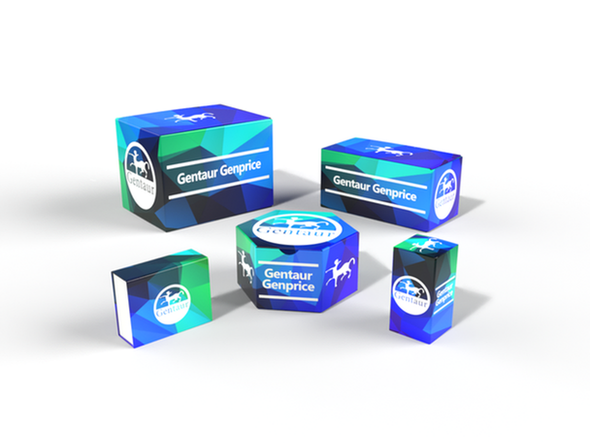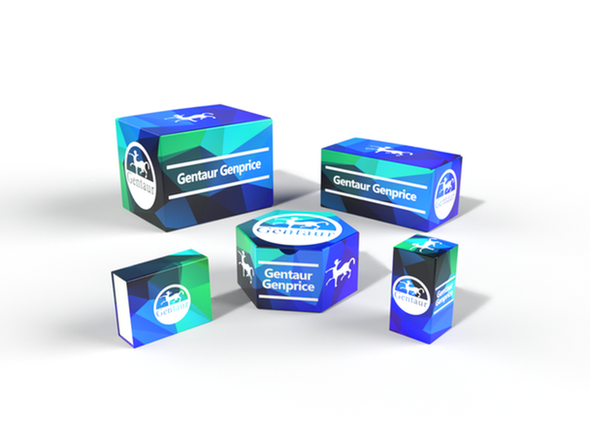Description
MCP-3 Antibody (biotin) | XP-5223Bt | Gentaur UK, US & Europe Distribution
Host: Goat
Reactivity: Mouse
Homology: N/A
Immunogen: Produced from sera of goats pre-immunized with highly pure (>98%) recombinant mMCP-3 (murine MCP-3) .
Research Area: Chemokines & Cytokines, Antibody Pairs
Tested Application: E, WB
Application: ELISA:
Sandwich:
To detect mMCP-3 by sandwich ELISA (using 100 μL/well antibody solution) a concentration of 0.25 - 1.0 μg/mL of this antibody is required. This biotinylated polyclonal antibody, in conjunction with our Polyclonal Anti-Murine MCP-3 (XP-5223) as a capture antibody, allows the detection of at least 0.2 - 0.4 ng/well of recombinant mMCP-3.
Western Blot:
To detect mMCP-3 by Western Blot analysis this antibody can be used at a concentration of 0.1 - 0.2 μg/mL. Used in conjunction with compatible secondary reagents the detection limit for recombinant mMCP-3 is 1.5 - 3.0 ng/lane, under either reducing or non-reducing conditions.
Specificiy: N/A
Positive Control 1: N/A
Positive Control 2: N/A
Positive Control 3: N/A
Positive Control 4: N/A
Positive Control 5: N/A
Positive Control 6: N/A
Molecular Weight: N/A
Validation: N/A
Isoform: N/A
Purification: Anti-mMCP-3 specific antibody was purified by affinity chromatography and then biotinylated.
Clonality: Polyclonal
Clone: N/A
Isotype: N/A
Conjugate: Biotin
Physical State: Lyophilized
Buffer: N/A
Concentration: N/A
Storage Condition: MCP-3 antibody is stable for at least 2 years from date of receipt at -20˚C. The reconstituted antibody is stable for at least two weeks at 2-8˚C. Frozen aliquots are stable for at least 6 months when stored at -20˚C. Avoid repeated freeze-thaw cycles.
Alternate Name: fic, marc, mcp3, MCP-3, Scya7, Fic, Mcp3, C-C motif chemokine 7, Monocyte chemoattractant protein 3
User Note: Centrifuge vial prior to opening.
BACKGROUND: This is a secreted chemokine which attracts macrophages during inflammation and metastasis. It is a member of the C-C subfamily of chemokines which are characterized by having two adjacent cysteine residues. The protein is an in vivo substrate of matrix metalloproteinase 2, an enzyme which degrades components of the extracellular matrix.






